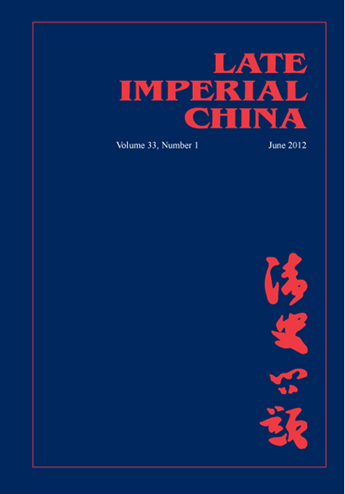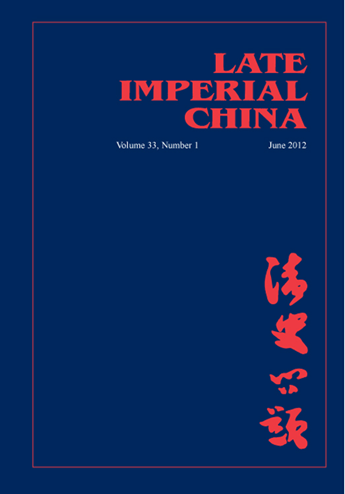
in Late Imperial China Vol. 33, No. 1 (June 2012), pp. 55-88.
Established in 1379, the Imperial Music Offce (Shenyue guan) remained intact until 1743 when the Qianlong emperor (1711–1799, r. 1735–1795) ordered that it be reorganized into the Shenyue suo.This institution provided ritual specialists, musicians, and dancers for, and thus had a close connection to, imperial sacrifces. During its 364 years, Daoist priests who had received certifcates served as staff rather than gentry-offcials. This group of Daoist priests not only controlled the Imperial Music Offce, but also had a remarkable presence in the Court of Imperial Sacrifces (Taichang si) and even the Board of Rites (Libu). They played an indispensable part in imperial sacrifces, either as Confucian masters of rites (lisheng) who directed sacrifcial rites, or as musicians and dancers (yuewusheng) who played music and performed ritual dances. A study of this institution thus provides a rare opportunity to understand the interaction between Daoist priests and imperial sacrifces, which were informed by Confucianism.
I “discovered” the Shenyue guan several years ago, when I attempted to reconstruct the history of the Confucian masters of rites, the most important ritual specialists for Confucian rituals, and of imperial sacrifces. In imperial sacrifces the Confucian masters of rites, called managers of ceremonies (dianyi), ceremonial assistants (zanlilang), transmission assistants (chuanzan), or chief assistants (tongzan), were appointed from among the Daoist priests of the Shenyue guan from 1379 to 1743. It soon became obvious that an inquiry into the institution and its role in imperial sacrifces was in order. The current essay presents the primary fndings of this investigation.
Based on information collected from the veritable records (shilu), imperial statutes, collected works, miscellanies, and local gazetteers, this article attempts to present a detailed examination of the Shenyue guan and its role in imperial sacrifces. It is divided into fve parts: the frst part describes the establishment of the institution and its offcials and clerks; the second part explores the Daoist background of these offcials and clerks; the third part discusses the roles the Daoist priests affliated with the institution played in the performance of imperial sacrifces; the fourth part examines the discourse concerning the institution among scholar-offcials from the mid-Ming to its reorganization in 1743 and the legacy of Daoist religion in the Shenyue guan after the 1743 reorganization; the last part highlights some implications of the study.
明清時期的神樂觀與王朝禮儀——道教與王朝禮儀互動的一個側面
【摘要】自明初創建至乾隆七年改革,神樂觀主要職員由道士充任。這些道士控制了神樂觀,逐漸把持了太常寺,進而滲透到禮部。他們作爲贊相禮儀的禮生或負責奏樂、舞蹈的樂舞生,在王朝祭祀禮儀中引導屬於儒教系統的祭祀禮儀,並在其中扮演主導性的角色。在中國歷史上,這也許是儒教與道教互動史中最爲特殊的一段因緣。
【關鍵字】明清 神樂觀 道教 王朝禮儀
【作者簡介】劉永華,北京大學歷史學系教授
>>英文文論文全文
![]() yonghua liu,Daoist Priests and ImperialSacrifices in Late Imperial China.pdf
yonghua liu,Daoist Priests and ImperialSacrifices in Late Imperial China.pdf
>>中文論文全文
![]() 刘永华-明清时期的神乐观与王朝礼仪...教与王朝礼仪互动的一个侧面.pdf
刘永华-明清时期的神乐观与王朝礼仪...教与王朝礼仪互动的一个侧面.pdf
(來源:劉永華)
返回列表


